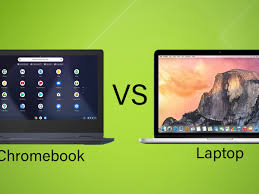Chromebooks vs. Tablets: What’s the Difference ?

Strong 8k brings an ultra-HD IPTV experience to your living room and your pocket.
When deciding on a portable device for work, school, or entertainment, you might find yourself torn between Chromebooks and tablets. Both are compact and versatile, but they serve different purposes and cater to distinct user needs. Understanding their differences can help you make an informed decision.
In this article, we’ll dive into the key distinctions between Chromebooks and tablets to help you choose the right device for your lifestyle.
1. Operating System
The operating system is a fundamental difference between Chromebooks and tablets.
Chromebooks: Operate on Google’s Chrome OS, a lightweight system built around the Chrome browser. It focuses on cloud-based applications but also supports Android apps and Linux programs, offering flexibility.
Tablets: Use mobile operating systems like Android, iPadOS (for iPads), or Windows. These systems are optimized for touch interfaces and provide access to mobile apps via their respective app stores.
2. Hardware and Design
The form factor and hardware capabilities distinguish these devices.
Chromebooks: Resemble traditional laptops, often with full-sized keyboards and trackpads. Many models now come as 2-in-1 devices, allowing them to function as both laptops and tablets. They are better for productivity tasks requiring a keyboard.
Tablets: Feature touchscreen-centric designs, often without built-in keyboards (though detachable keyboards are available as accessories). Their lightweight and sleek form make them ideal for media consumption and portability.
3. Performance
Performance varies widely between Chromebooks and tablets based on their intended use.
Chromebooks: Typically use less powerful processors than high-end laptops but are optimized for web-based tasks and light productivity. Higher-end Chromebooks can handle more demanding applications like photo editing or coding.
Tablets: Offer a range of performance levels. High-end tablets like the iPad Pro or Samsung Galaxy Tab S series rival laptops in performance and can handle professional tasks, while budget tablets are better suited for streaming and light usage.
4. Software and Applications
The software ecosystem plays a significant role in choosing between Chromebooks and tablets.
Chromebooks: Depend heavily on web-based and cloud applications, such as Google Workspace (Docs, Sheets, Slides). They also run Android apps from the Google Play Store, expanding functionality.
Tablets: Provide access to a wide variety of mobile apps via app stores. High-end tablets often support professional-grade software, such as Procreate for design or Adobe Lightroom for photo editing, enhancing their versatility.
5. Battery Life
Battery life is a strong suit for both devices, but there are differences.
Chromebooks: Generally offer 10-12 hours of battery life on a single charge, depending on the model and usage, making them great for all-day productivity.
Tablets: Known for their impressive battery performance, tablets often last 8-15 hours, especially when used for streaming or browsing.
6. Portability
Both devices are portable, but tablets take the lead in terms of size and weight.
Chromebooks: Slightly heavier and bulkier due to their laptop-like design. They’re still lightweight compared to traditional laptops, but less so than tablets.
Tablets: Exceptionally lightweight and compact, often weighing less than a pound. They are easier to carry around, especially for travel or on-the-go use.
7. Cost
Cost is a critical factor for most buyers.
Chromebooks: Generally more affordable than laptops, with prices ranging from $200 to $700, depending on the features. High-end Chromebooks can cost more but are still budget-friendly compared to premium laptops.
Tablets: Vary widely in price. Budget tablets can be found for under $100, while high-end models like the iPad Pro can exceed $1,000, especially with accessories like keyboards or styluses.
8. Use Cases
The ideal use cases for Chromebooks and tablets differ significantly.
Chromebooks: Perfect for students, professionals, or anyone needing a portable device for light productivity tasks, such as typing documents, browsing the web, or managing emails.
Tablets: Best suited for media consumption (streaming videos, reading eBooks) or creative tasks like drawing and photo editing. High-end models can also serve as productivity tools with the right accessories.
Conclusion
Choosing between a Chromebook and a tablet depends on your specific needs. If you prioritize productivity, need a keyboard, and prefer a laptop-like experience, a Chromebook is the better option. On the other hand, if portability, touch interface, and media consumption are more important, a tablet might be the ideal choice.
Making them perfect for professionals, gamers, and power users, laptops are the preferred choice for innovation hubs like Techvoxi and individuals who require optimized computing power for intensive tasks.
Note: IndiBlogHub features both user-submitted and editorial content. We do not verify third-party contributions. Read our Disclaimer and Privacy Policyfor details.


